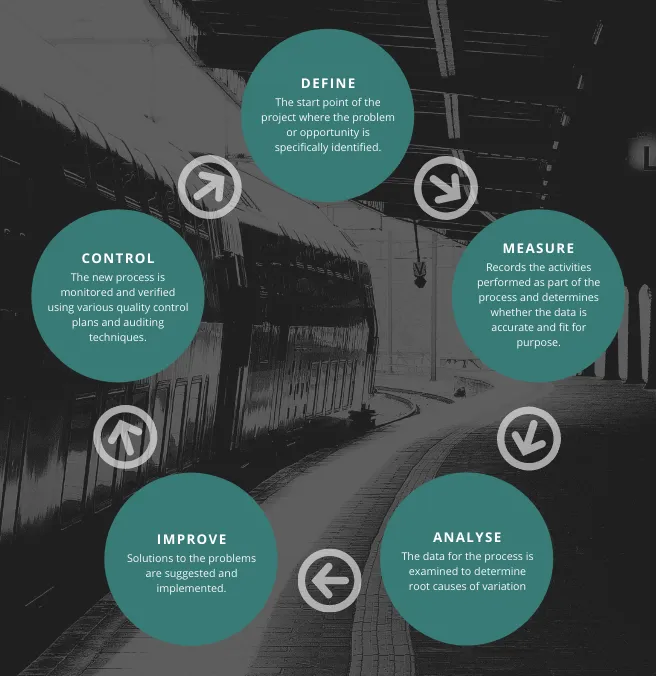Share this
Previous story
← Rolling Stock Networking Exhibition 2021
Next story
Lean Six Sigma Black Belt Vacancy →
Lean Six Sigma is a powerful range of skills and techniques that have been used to optimise the performance of an organization for decades. The tools identify waste within business processes that do not add value for the customer and then eliminate them. Doing this results in streamlined processes that are more efficient, add value for the customer and can increase profit margins.
Today’s leading organisations adopt a lean philosophy to ensure they’re achieving optimum efficiency and remain the best of the best!

So, who wouldn’t want a bit of that action? Thankfully, there’s a collection of qualifications that can walk you through the Continuous Improvement journey until you’re a Continuous Improvement Grand Master!
Lean Six Sigma qualifications come in the form of Improvement Apprenticeships advancing through various levels; each level has a different belt colour. While you don’t need to channel your inner King-Fu master to understand the levels, it might be helpful to know they are in fact similar to those used in martial arts – in that the colour of the belt is based on skill, experience, knowledge (of Lean Six Sigma, not Karate chops!).
The first stop on the journey is the White Belt. This is a Level 2 qualification, or an “Intermediate Apprenticeship” – equivalent 5 GCSE passes.
This level in the UK comes in the form of a Lean Manufacturing Operative Apprenticeship, which focuses on identifying ways to improve the safety, quality, cost or process efficiency using lean manufacturing tools such as kaizen. This qualification is only relevant to those working within a manufacturing setting.
Next is the Yellow Belt; a level 3 qualification, or “Advanced Apprenticeship”, is equivalent to 2 A-level passes.
From here on in the practitioner doesn’t need to work in a manufacturing environment to benefit from Lean Six Sigma. An Improvement Technician delivers and coaches improvement activities using Lean Six Sigma Methodologies within their own job role.
The next stop is the Green Belt, or Improvement Practitioner qualification. This is a Level 4, or “Higher Apprenticeship”, which is the equivalent to a foundation degree. At this point, the knowledge and understanding of Lead Six Sigma methodologies becomes much more in-depth. An Improvement Practitioner will identify and take the lead on smaller continuous improvement projects, providing an in-depth analysis and implement necessary effective countermeasures. Throughout the qualification they will learn Lean frameworks such as DMAIC and others. They can also play a key supporting role in larger projects across the business.
A Black Belt, or Improvement Specialist, is a Level 5 “Higher Apprenticeship”, which is equivalent to a full degree. An Improvement Specialist really leads the deployment of an improvement strategy. They will train others and for provide deep technical expertise in advanced Lean and Six Sigma, Project and Change Management principles and tools.

Improvement Specialists typically report to Master Black Belts (or Improvement Leaders), who develop the improvement strategy. Improvement Specialists manage Green Belts (Improvement Practitioners) who lead on the smaller improvement projects. They also work with other Black Belts to support the delivery of improvement strategy, working on multiple simultaneous projects linked to key business objectives.
Finally, an experienced Black Belt may decide to go on to study to become a Master Black Belt. This is a Level 6 qualification which is equivalent to a full degree. Master Black Belts really are experts in Lean Six Sigma & Project and Change Management. Improvement Leaders work closely with the senior leadership team within the business to understand and set the improvement activities of the business. They are responsible for managing the improvement projects and supporting the staff working on these projects.
The belts are a brilliant visual representation of the learning journey from novice to master!
Find out more about what each qualification entails here.
These Related Stories



No Comments Yet
Let us know what you think